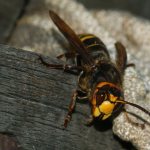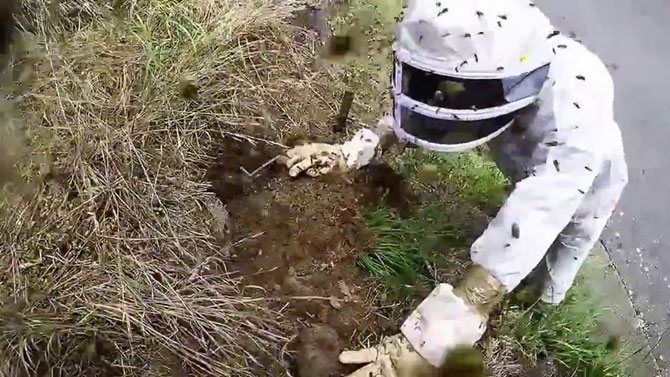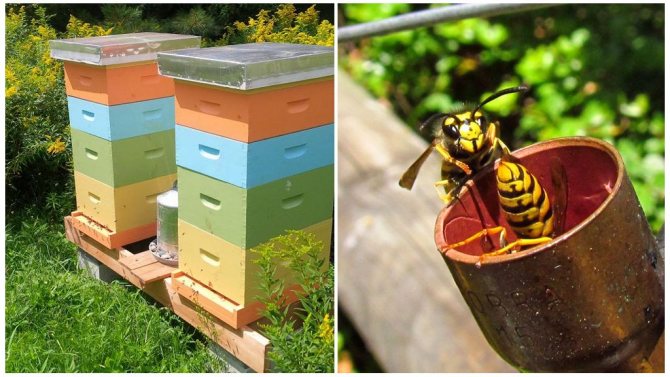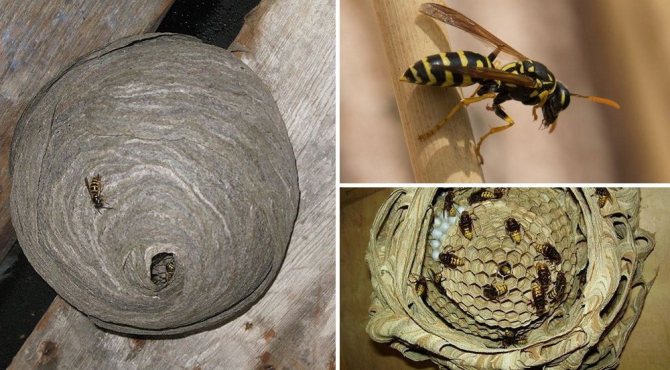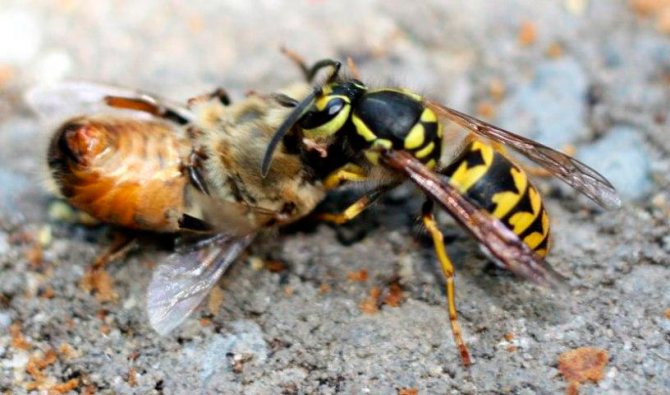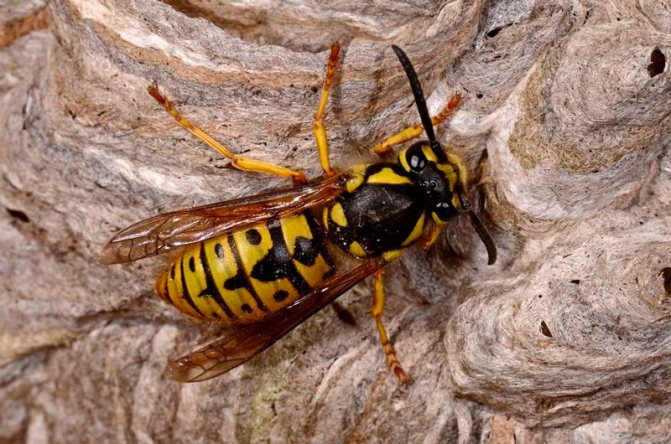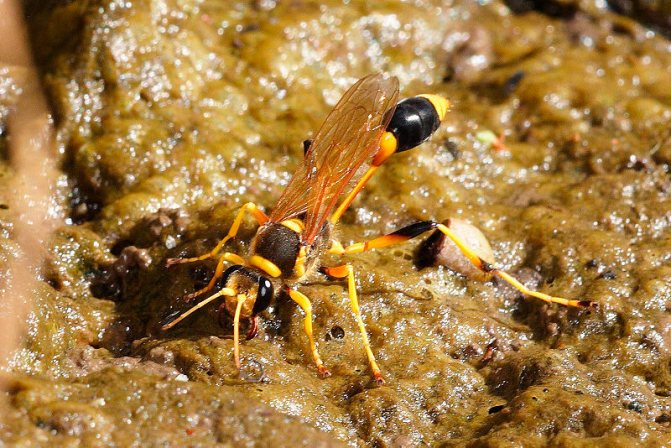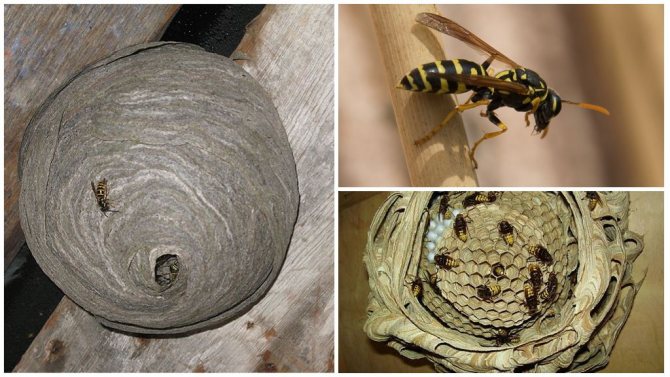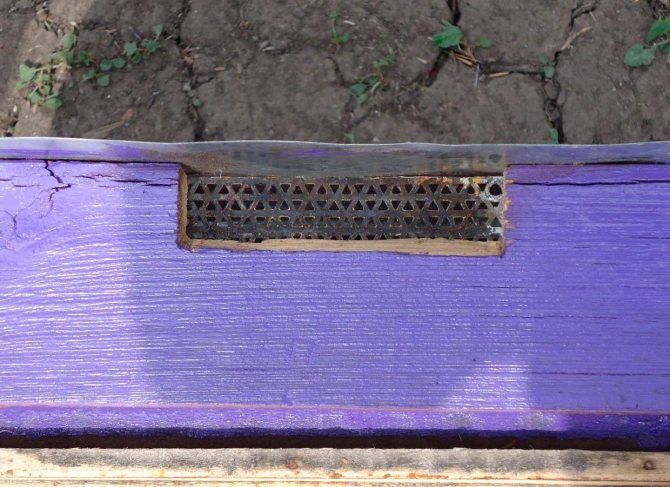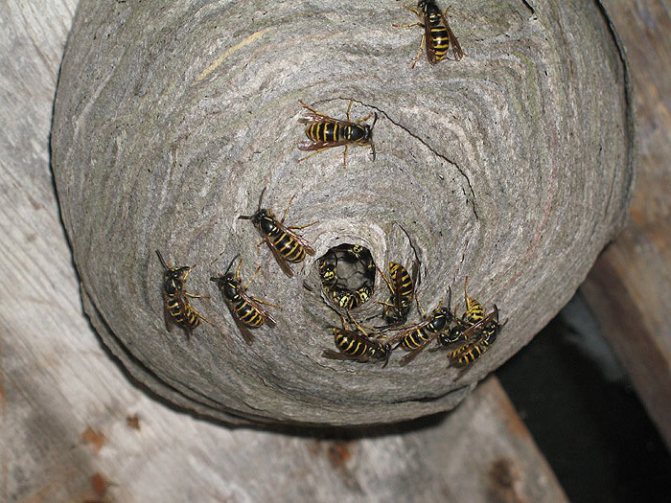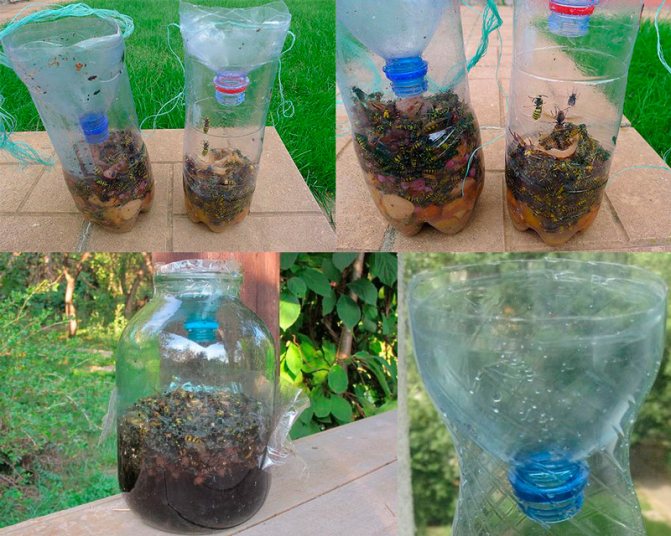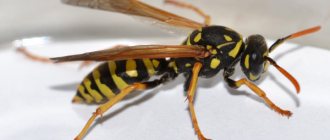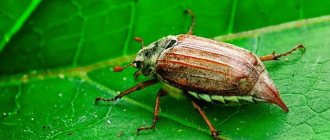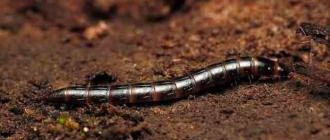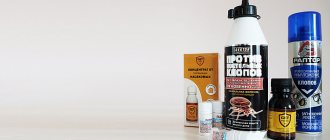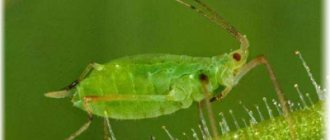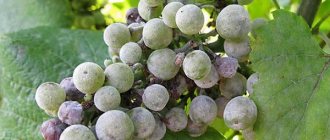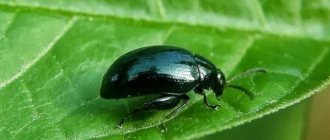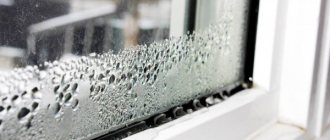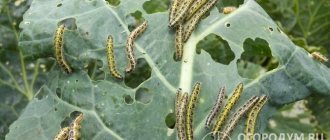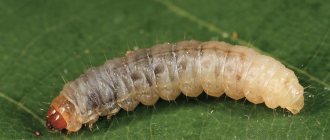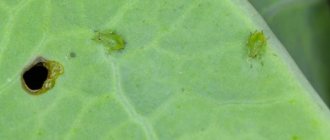Why wasps are harmful
Own apiary is not only honey and beekeeping products, but also constant work from early spring to late autumn. Keeping insects requires protection from pests: ants, wax moth, mice, birds. A bear in an apiary is also dangerous. A furry beast can not only feast on honey, but also open its nests.
Wasps also cause significant harm. If you do not remove pests in early spring, then in summer and autumn you can face their invasion.
All wasps are predators by nature, who catch their prey and feed their offspring and mother. If insects have settled next to the apiary, then the fight is inevitable. Predators love honey, so they often steal.
Bees protect their family and product, but losses in the fight with the enemy are significant. They stick around the enemy in the shape of a ball and begin to flap their wings. As a result, the temperature inside the ball reaches +50 degrees, this kills the stranger.
Who are the hornets
Predators are divided into two types: solitary and public. Regardless of the group, insects have the same structure: a small head, an oblong abdomen, a convex chest, two pairs of membranous wings. The junction of the lower and upper body is thin.
The size of the hornets inspires fear, varies 1.8-3.5 cm, the mother reaches 5-7 cm.The body color is brown with a dark yellow pattern, the abdomen is black. Domestic individuals attack far from the hives, and tropical ones arrive in groups and destroy the family in 3 hours. At the same time, 30-40 thousand bees die.
Hornets build nests in tree holes and form a whole colony. A mass resembling paper is prepared for honeycombs.
It is advisable to start fighting hornets in early May, when the population is small.
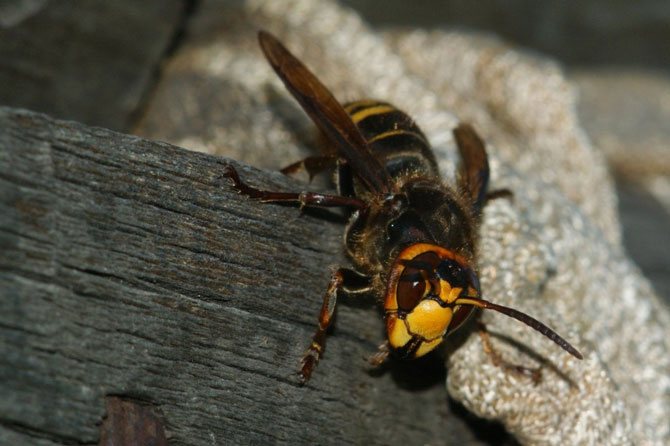
You need to know the enemy by sight: common hornet
Who are philanthropists
Philant is a bee wolf that catches and eats bees. Coloring of the body is bright yellow, on the head is a golden-yellow crown, length 16-17 mm. Males are smaller than females, they feed on plant foods.
Only females hunt, paralyzing prey in flight. To feed one larva, the wasp kills 4-6 bees. First, it removes nectar, which serves as a poison for the offspring, then carries it to the nest.
The philant makes burrows in the ground that resemble an anthill. It is necessary to look for a home under your feet.
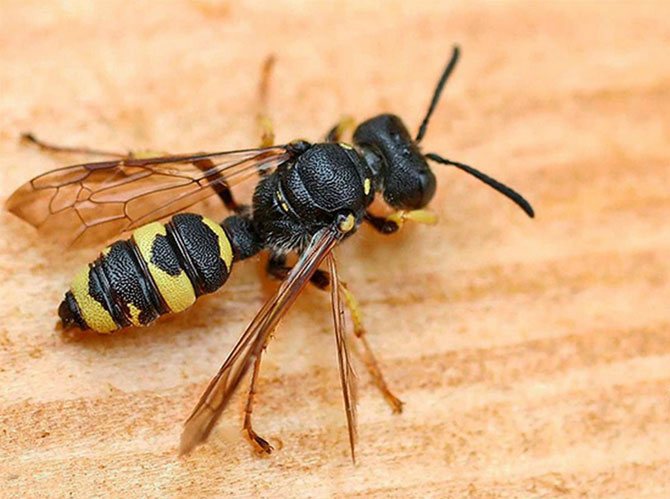

Philant or bee wolf is the most dangerous wasp for bees
Preventive measures
Experienced beekeepers know that the best way to protect the hive from any misfortune is to have a strong bee colony. She needs to provide a full-fledged food base and good living conditions. The family should have a young, highly productive uterus. She gives more offspring. The hives must be insulated so that the bees do not have to waste energy on heating the brood.
A strong family is able to cope with invaders on its own. She can even repel the attack of the hornets. The dimensions of the European hornet are 22-25 mm, they are not much larger than honey insects. In countries where the aggressors reach 50-70 mm, local bees have developed a special battle tactics. They stick around the hornet with a dense ball of several hundred individuals. Due to the movement of bodies and vibration of the wings, the temperature inside the swarm rises to 47 0. The heat quickly kills the predator. After two or three minutes, the bees scatter, and the hornet falls dead.
Sources:
Wasp control methods
Wasps are useful insects for the garden, they eat caterpillars, flies, bedbugs, but such a neighborhood with an apiary is not desirable. They hunt bees, which results in less honey. Therefore, the beekeeper must have a control hive and apiary scales.
Beekeepers know that if you do not get rid of wasps, then you can lose not only honey, but also the bee family. Therefore, they have invented a lot of pest control methods.
Watch the video on how to get rid of a wasp nest:
How to find a nest
Predators build nests with hexagonal honeycombs in several tiers and a protective shell. The raw material is old wood, which resembles paper.
The first task for the beekeeper is to find the nest. Insects build a dwelling in a hollow of a tree, on branches, in a non-residential building or in the ground.
To trace the path to the nest, you need to catch one individual, carefully attach a bright thread. When the wasp flies home, the identification mark will indicate the location.
There are methods for destroying the nest:
- If the dwelling is in the ground, fill it with kerosene and set it on fire. This method is fast and effective.
- The second way is the effect of boiling water. All wasps will not die, and angry individuals will attack the beekeeper. Therefore, work is carried out in a protective suit.
- If the nest is under a roof, then they are disposed of with the help of chemicals: Karbofos, Delta Zone, Chlofos. The solution is poured into a bag and the nest is wrapped, the entrance is closed with material.
- Popular aerosols such as Diflofos, Raptor, Moskitol, Raid are also used. The product is sprayed at a distance of 6 m. Wasps quickly die. Then the nest is knocked down and set on fire.
- Smoke is used as a deterrent. A fire is made near the nest and rubber tires are burned. Then the insect dwelling is removed and destroyed.
- A less barbaric way is to douse the nest with kerosene or gasoline and leave the exit open. Insects will leave the home forever.
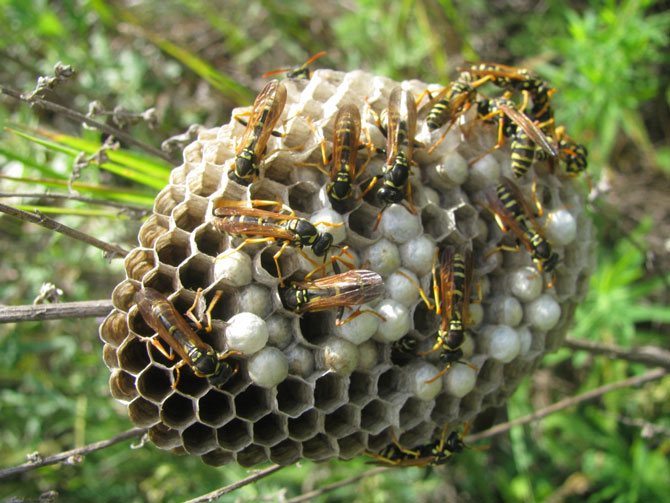

Wasp nest on a tree branch
Watch the video on how to destroy a hornet's nest
Traps
It is not always possible to find a nest of predators, so beekeepers make traps on the roofs of the hives. To do this, put a sticky bait. Predators flock to the sweet, but they can no longer rise, as they are stuck. This way you can destroy most of the hornets before they rob.
In order not to attract the attention of bees, the remedy should be made from fermented products.
Many beekeepers use themselves as bait. They put on a protective suit and treat it with honey, then walk around the apiary and attract wasps. When a sufficient amount is collected, sprinkle with Diplofos.
Chemistry
Insecticidal preparations cannot be used in the apiary, this will cause the death of bees.
Chemicals are added as bait to minced meat. For cooking you need:
- 100 g of any minced meat;
- Raptor, boric acid, Aktara, Gett.
The offspring and uterus of wasps need meat, they will give preference to such food. All that remains is to mix the ingredients. Insecticides act in a paralyzing manner on the nervous system of insects. Individuals do not eat the bait, but food contact is sufficient for their death. Feeding offspring is the death of an aspen family.
Fresh meat is used against philanthropists:
- A piece weighing 200 g is suspended on a tree branch at a height of 50-60 cm from the ground. Predators quickly surround the meat.
- The next day, you need to sprinkle the product with Chlorophos, put a bucket of water on the ground. Filants, after being poisoned, fall down and drown.
The method can also be used against hornets and wasps.
Do not lay out the bait where dogs or cats are walking.
Watch the video on how to rid the hive of hornets
Folk ways
From folk remedies, a fly agaric hat is used. The mushroom is crushed and boiled in the composition: 250 ml of water and 100 g of honey.
The product is not used during active collection of nectar.
To destroy wasps, a simple soap solution is suitable at the rate of 50 ml of gel per 1 liter of hot liquid. The agent is sprayed onto the socket for 15 seconds.
Dream interpretation - bee
In contrast to their fellows, hardworking bees are an order of magnitude higher. This is confirmed by the neural network - the language of communication between insects. All responsibilities for the collection, acceptance, further reproduction and feeding of the offspring (larvae) in the hive are strictly distributed. The toiler bee not only produces a large amount of honey of different varieties, eats herself and feeds her offspring with it.
The main sources of nectar production are various trees, flowers and shrubs. It is from the plant from which the pollen is collected that the taste of the honey produced will depend. Which we will eat on winter evenings. The process of how bees make honey is conventionally divided into the following stages.
Bee at work
- With the arrival of spring and the blossoming of the first flowers, the time for collecting nectar begins. Scout bees set off in search of suitable plants. Moreover, we note - they are only looking for places and take pollen for a sample. Insects-collectors will collect honey nectar, after scouts inform them and direct them towards the collection point.
- Bees collect nectar with the help of a proboscis, which, in fact, the wasp does not have. Which gives them another advantage. The taste buds located on the legs help it determine if there is pollen on the plant. During the collection, the bee places the found nectar into its mouth, where the processes of production of special enzymes take place with the help of the secretion of the salivary glands. This process is very important in all phases of honey nectar production.
- Acceptance and further processing of the collected product is carried out by the receiving bees. They place the product in the cells of the honeycomb, then the process of honey processing begins. It is critical in the chain as the quality of the honey depends on it. First of all, insects spread honey in honeycombs, and so that they are only a quarter full. Such proportions enable water to evaporate correctly and quickly. The nectar then moves to the top walls of the cells and the hive is well ventilated to remove water vapor. In the process of thickening honey, bees transfer it from one honeycomb to another many times. Last but not least, the ripening honey is placed in the top of the combs, filling them up to the top.
- The final stage in the preparation of honey by bees is to seal the cells with the honeycomb with wax caps. The moisture content of honey (water content) at this moment should be no more than 21%. Only such a product can be of high quality and ready to use.
To bad weather. Bees hovering over your head mean victory, triumph, success. Keep the bees - get joy from your wife and earn your living with honest labor. To see attacking bees means an epidemic, pestilence. To kill a bee means to experience obstacles, hindrances. A hive with bees - dream of wealth. An empty hive means to receive punishment without guilt.
Bees swarm in a dream - business will not end with success. Bees sting in the leg - to the joy associated with material gain, acquisition. A swarm of bees - to take an orphan into the house; this dream can also mean the ruin of the family. A bee stung - for a young woman to pregnancy. A hive in a dream - to big profits, increased income or higher wages.
If you saw honey in a dream, you will soon have a significant state. In addition, honey dreams of success in love. Slowly flowing honey promises a slow progress in current affairs. If your fingers were smeared with honey in a dream, then hard times will come. dreams of well-being and peace, although darkened by some kind of unsatisfied desires.
If you ate honey in a dream, you will achieve wealth and love.For lovers, this dream means the joy of family life. If you buy honey on the market, you are content with the relationship you have. If you eat fresh honey, you are currently full of strength and energy and everything is going well in your personal life. Just do not be too active, otherwise your partner will get tired of you and run away. If you eat sugar-coated honey, in reality you attach too much importance to material well-being.
You need to understand what to do if allergies to dangerous bites of various insects begin to develop
Once the bite has occurred, it is important to identify the type of insect. After that, you need to act based on the state of the person
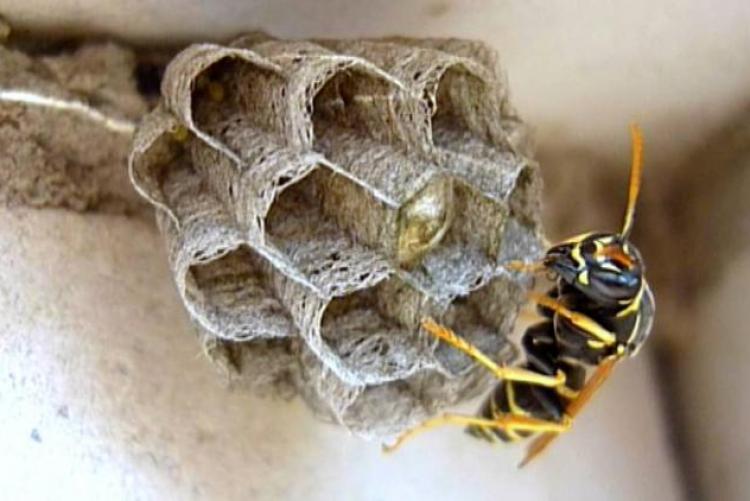

If there is no immediate reaction to poison / saliva, then the attack site must be disinfected to exclude the possibility of infection.
If stung by a bee, you need to carefully remove the sting to reduce the inflammatory response. Disinfect the place. The poison from a wasp or hornet should be quickly sucked out of the wound (the concentration of substances will decrease). After that, a cold compress is applied to the affected area. To reduce the swelling, it is recommended to raise the affected limb.
Also, in an age-appropriate dosage, you should take an anti-inflammatory drug of a non-steroidal group, pain relievers, antihistamines for allergies, which starts from bites of stinging and ordinary insects. A special cream helps to relieve itching.
If an acute reaction occurs, it is necessary to immediately give antiallergic drugs in tablets and other forms, inject adrenaline into the muscle, control and suck mucus to prevent suffocation, and also carry out the inhalation process.
Fighting wasps in the apiary in autumn
Pest control begins in the fall. Wasps are easier than bees to endure such a period and by any means try to get into the hive. Strong families are not immune from invasion, and weak ones perish. Therefore, it is important to take measures to protect the hives.
At this time, place traps and dig up the ground in the area next to the nest. Pay attention to sandstones, clay-rich soil, ravine. Also, block access to the hive, seal up all the cracks with putty in the corners and the bottom of the house.
DIY wasp trap
Beer and sour jams attract predators and serve as bait. To make a trap, you need a plastic bottle:
Step # 1. Cut off the top with a knife with a knife.
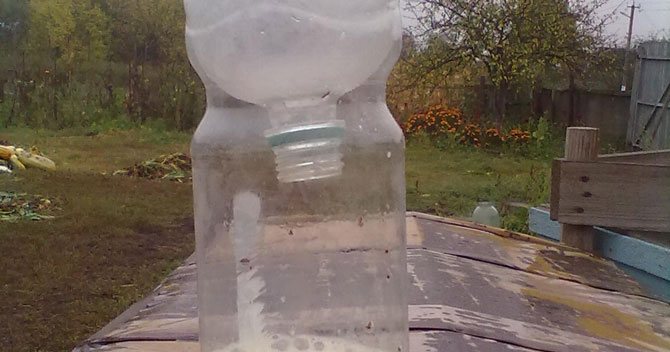

Such a simple device will help in the fight against wasps.
Step # 2. Pour fermented juice, syrup or jam with water inside. To prevent the bees from the apiary from falling into the trap, it is better to use meat broth.
Step # 3. The cut-off part of the bottle is placed on the reverse side.
Step # 4. The trap is placed next to the house, the wasps fall into the bottle, but cannot go outside and drown.
Step # 5. As you fill, change the content every 3 days.
Several such devices are required.
Watch the video on how to make wasp bait
Destruction of a wasp nest
There are several methods. In most cases, water, fire, smoke are used.
- If there is no desire to kill wasps, which also benefit nature, they douse the nest with a strong-smelling substance - gasoline, kerosene, engine oil, but leave the entrance and exit open. In a few hours, the family will begin to migrate.
- Smoke has a deterrent effect. A fire is laid out near the nest or rubber is set on fire. It is recommended to repeat it the next day. An empty nest is dug up, removed, destroyed.
- A barbaric but drastic method is burning the nests. Suitable if the wasp hive is placed in the ground. Doused with a flammable substance, throw a match. Nothing will be left in a minute.
- Water. The nest in the ground is poured with a bucket of boiled water with the addition of soap. If the hole is large, repeat.When placing a wasp tree house, under a roof, in any other place on a hill, the cocoon is dipped in a bucket of water. Gently immerse in water, incubate for 20 minutes. Remove the cocoon.
If the wasp family settled in the cracks of the house, garage, hard-to-reach places, they are poured with polyurethane foam. The tool instantly stops the flow of air, all residents die. In the same way, you can quickly plug the entrance to the nest, which is placed anywhere.
There is no point in waging a fierce fight with wasps on the site, destroying nests, exterminating a family, if these are not hornets. Insects on the site destroy a huge number of garden, garden pests, help a person to preserve the harvest. Along with bees, they are the main pollinators of plants, bringing significant benefits to people.
Wasp trap - turnkey solutions
In a specialized store, you can buy ready-made pickles. The principle of operation of the trap is the same: syrup is poured into the container, wasps penetrate through the holes, but it does not work out. Some salted fish are supplied with bait, all that remains is to add water. Such a product costs 100-400 rubles.
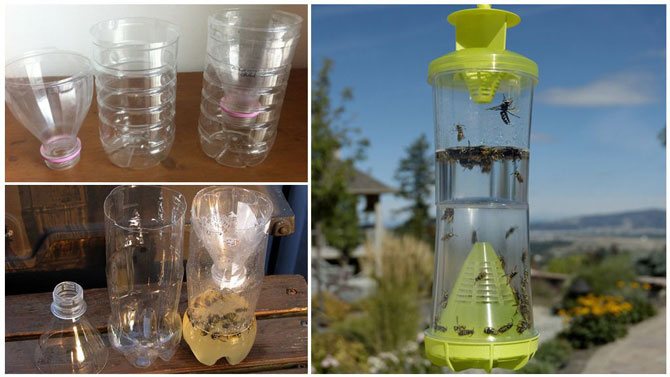

Shop osovka is no different from homemade
Search for enemy nests
You can protect bees from wasps by cardinal methods. If wasps attack the apiary regularly, you need to look for a nest.
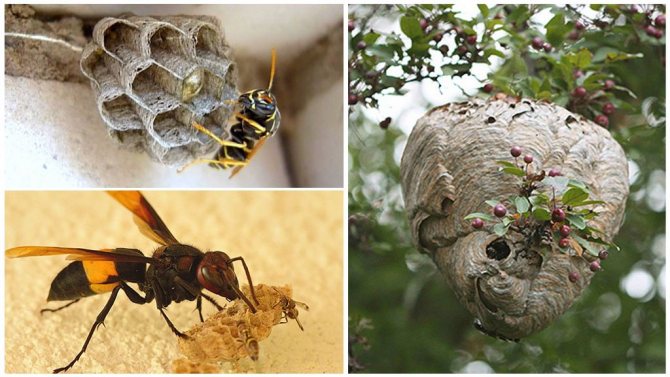

Wasp nest on the site
The bee wolf or European philanthropist belongs to the sand wasp family. Each individual lives separately. Nests, as such, are not built. Burrows are made to drag the prey there, lay an egg, and provide food for the larva for the entire development cycle. They feed on adults with nectar, plant juices, and honey. It is impossible to find a philanthropist's nest with one immobilized victim. The way out is to kill wolves mechanically when they are found in the apiary. Inspect the area periodically.
Hornets are the largest representatives of wasps in our area, the main enemies of bees, smaller representatives of the wasp family. Hornets are public figures. They build huge nests, transmit signals to each other about danger, finding food. If one hornet finds a bee hive, there will be a swarm within an hour. Large wasps build nests on trees, in the ground, under stones, thickets, under the roof of outbuildings, in attics.
Finding a hornet's nest is not difficult if it is located on the territory of a garden, vegetable garden, or farmstead. It is a large gray-brown cocoon that resembles a paper sphere. There are several methods of destruction - they pour boiled water, polyurethane foam, douse them with gasoline to burn them later, sprinkle with poison or spread poisonous bait.
If ordinary wasps climb into the hive, make regular raids, you need to look for the nest of these insects, destroy it. Outwardly, the paper wasp hive does not differ from the hornet house, the average nest size does not exceed the average apple.
On a note
Write down or remember the following rules:
- Do not use insecticides in the apiary, there is a high likelihood of bee poisoning.
- It is necessary to place hives in an area with high vegetation.
- In cold weather, reduce the size of the entrance to reduce pest infiltration.
- The hornets' nest is destroyed late in the evening or at night.
Pest control in the apiary is an integral part of the necessary work. Taking care of bees will not only bring pleasure, but also high-quality honey and other beekeeping products.
(
39 estimates, average: 5,00 out of 5)

